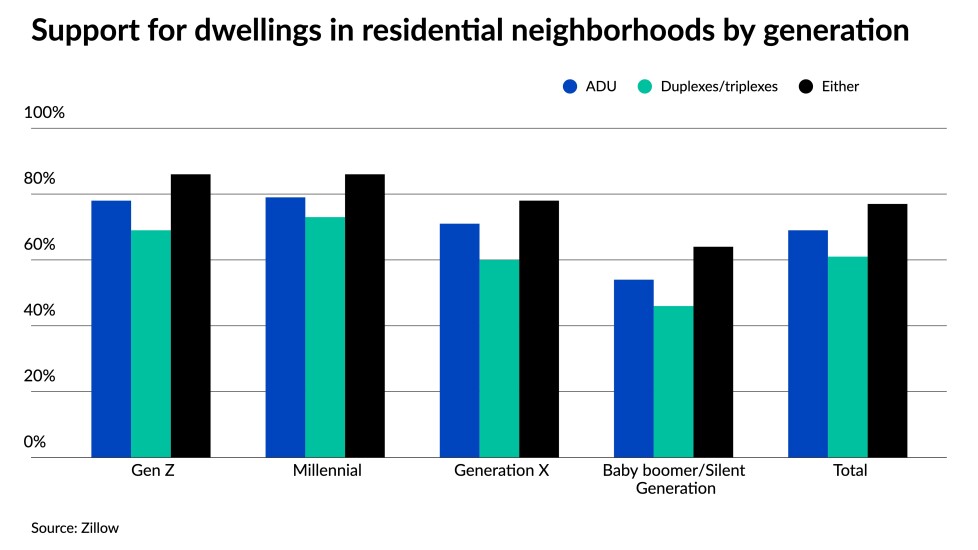Tough competition, soaring prices, and rising rates are just some of the many factors affecting younger generations of potential homebuyers. For more on these trends and others affecting young homebuyers, read our roundup below.

Younger buyers are flocking to Midwest and Mountain States
High prices and rising rates could continue to prevent young people from buying homes, according to Archana Pradhan, principal and economist at CoreLogic. “These trends toward record-breaking home prices and increasing mortgage rates will impact potential younger homebuyers and lower-income homebuyers the most,” Pradhan said.
Read more:

Average monthly mortgage payment for first-buyers is inching up
For first-timers, mortgage payments reached 25.6% from just 22.4% in the prior year of average household incomes in the fourth quarter, according to the National Association of Realtors.
“The escalating prices took a toll on home shoppers, compelling many to come up with extra cash and forcing others to delay making a purchase altogether,” said Lawrence Yun, National Association of Realtors’ chief economist. “A number of families, especially would-be first-time buyers, are increasingly being forced out of the market, and this is why supply is critical.”
Read more:

The popularity of build-for-rent housing is rising
In the fourth quarter of 2021, a report from the National Rental Home Council and John Burns Real Estate Consulting found that 26% of acquisitions by single-family rental providers were build-for-rent, up from just 3% in the third-quarter of 2019.
“[The occupants of these homes] tend to be younger professionals, perhaps with children, and are saving for a down payment or they're paying off student loan debt. But the plan is definitely toward homeownership at some point,” said David Howard, executive director of the National Rental Home Council.
Read more:

The younger generations are more open to purchasing a home at auction
Some factors that motivate young people to buy a house at auction include cost savings, a faster purchase process and being able to bid remotely through an app or website.
"Our study suggests that a growing number of buyers are embracing technology, and many are open to new pathways to achieve homeownership," said Dave Steinmetz, president of origination services at ServiceLink. "This indicates there is an opportunity for lenders to provide more targeted resources and guidance to buyers throughout their homebuying journey."
Read more:

Some current homeowners are anti-'densification,' further straining future supply
"Modest densification measures, like adding a small apartment in a backyard or converting existing homes into duplexes, could create millions of new homes,” Garcia added.
In New York, proposed legislation by Gov. Kathy Hochul that was ultimately pulled would have allowed one ADU on every residential owner-occupied lot and provided funding to jurisdictions and nonprofits.
Read more:

Gen-Z-ers are flocking to secondary cities
"These guys and gals are in the mid-700s credit-score wise. They really did their homework," said Andy Shelby, a senior loan officer and assistant branch manager at Broker House Lending in Louisville, Kentucky.
Read more:

Investor competition is high
To be sure, investors bought 20% of homes in areas tracked by Redfin during the first quarter of 2022. This is the highest share since 2000, the earliest year included in the brokerage’s data.
“Right now, those who can afford to buy are going to face less competition,” said Sheharyar Bokhari, an economist at Redfin. “They still have to compete with investors. The investor share has gone up, which means regular homebuyers were squeezed more.”
Read more:





